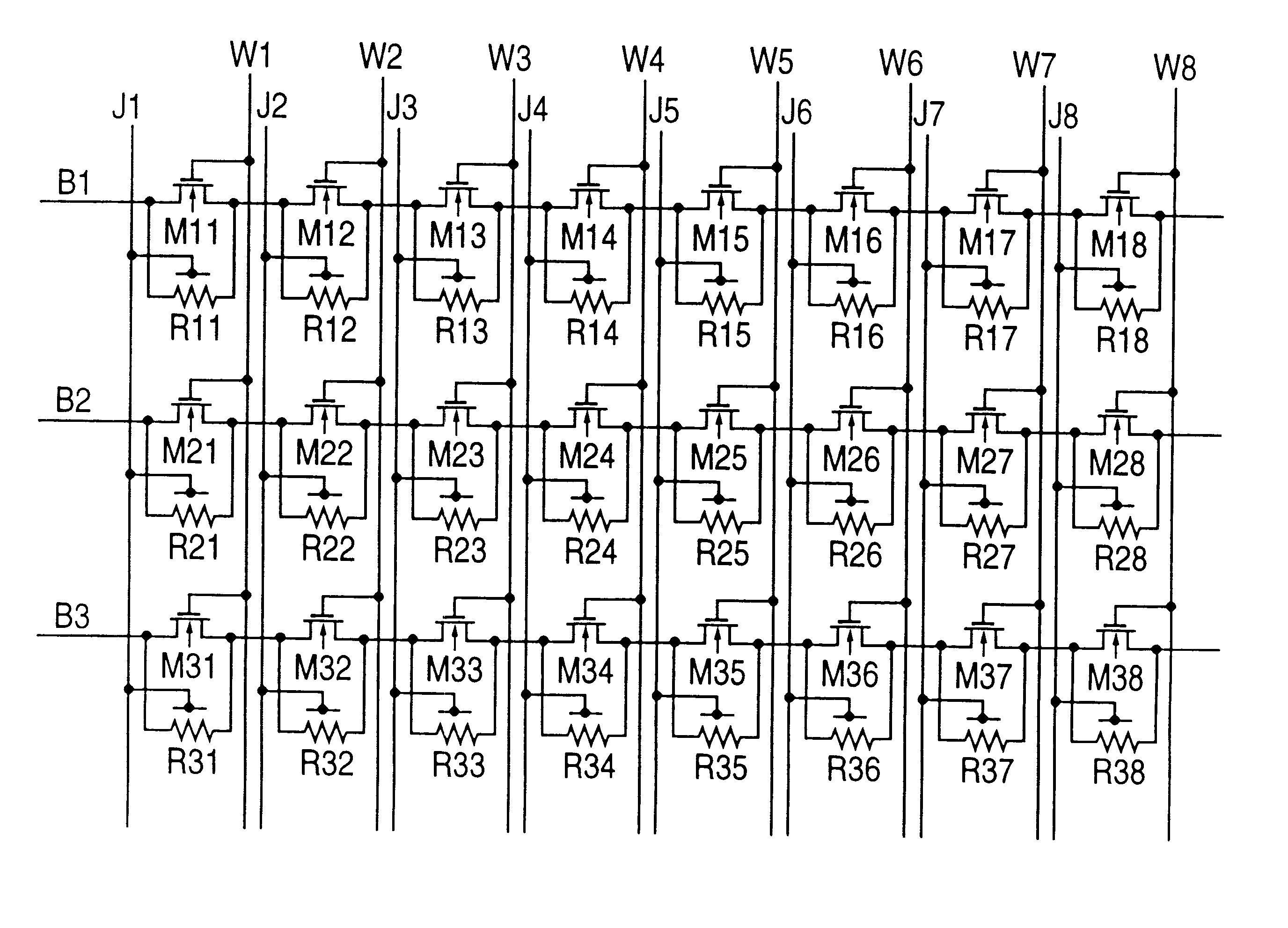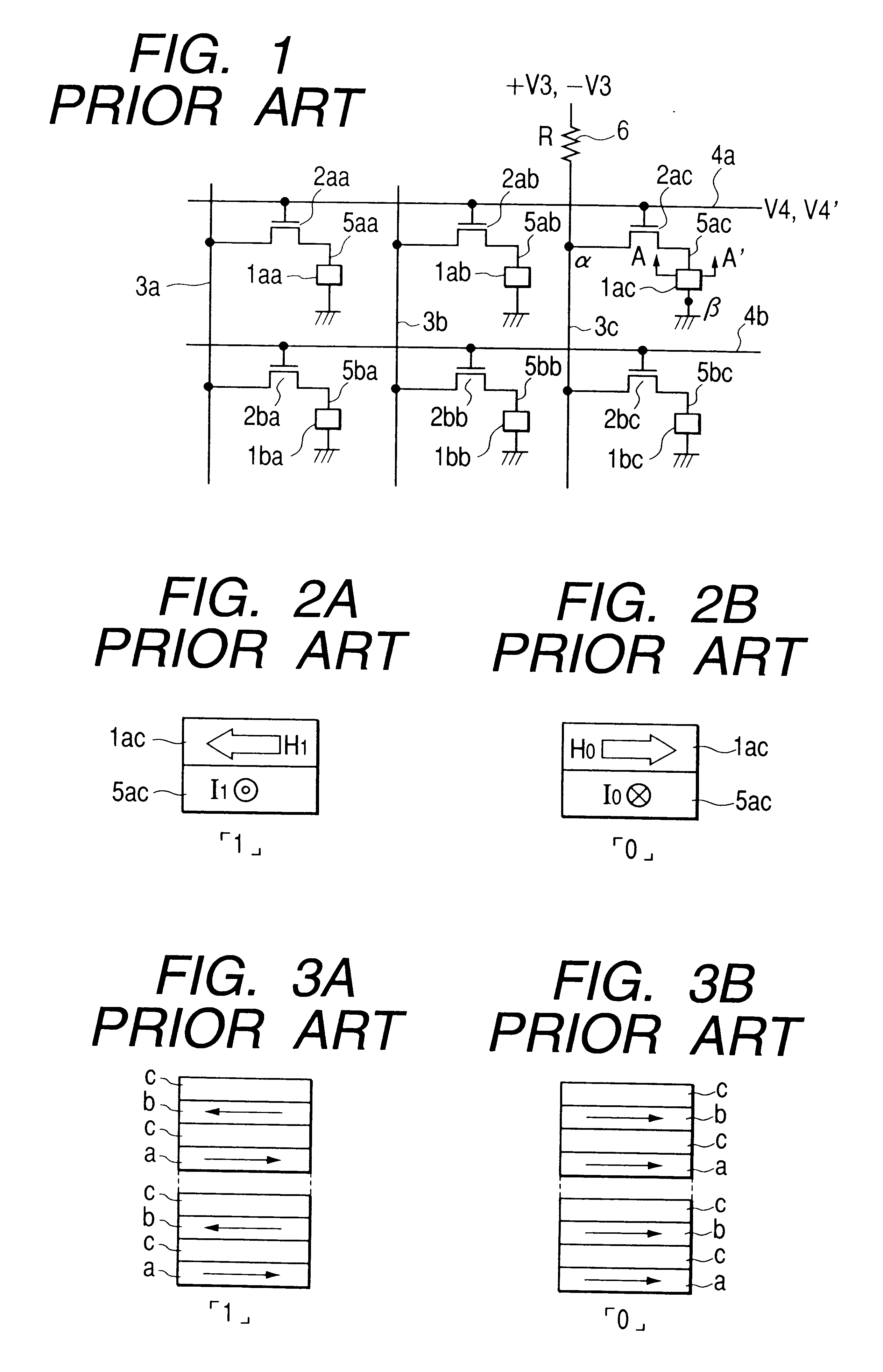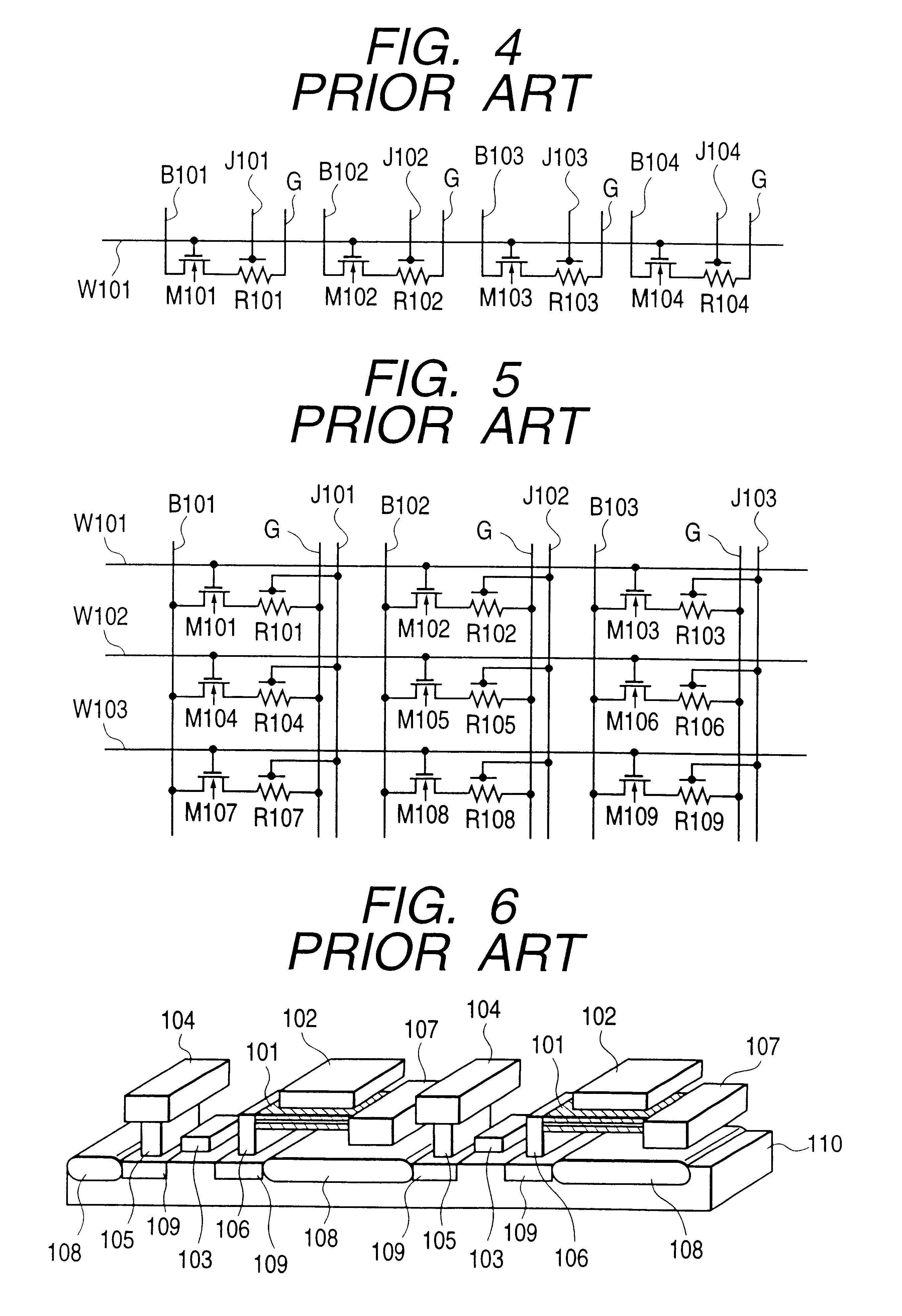Magnetic thin film memory, method of writing information in it, and me
a thin film memory and magnetic field technology, applied in the field of magnetic thin film memory, can solve the problems that the magnetic field necessary for writing cannot be effectively applied to the magnetoresistive thin film, and it is difficult to improve the degree of integration
- Summary
- Abstract
- Description
- Claims
- Application Information
AI Technical Summary
Problems solved by technology
Method used
Image
Examples
first embodiment
FIG. 7 is a circuit diagram showing the configuration of a magnetic thin film memory of the present invention. The reference characters R1 to R4 denote magnetoresistive thin films utilizing the giant magneto-resistance effect, and each of M11 to M14 denotes a metal / oxide / semiconductor field effect transistor (hereafter, referred to as "MOSFET"), and B1 denotes a bit wire, and J1 to J4 denote writing wires, and W1 to W4 denote word wires. A magnetic thin film memory of the present invention has a configuration in which a plurality of magnetic semiconductor hybrid elements each having a magnetoresistive thin film and a MOSFET connected in parallel are connected in series. By the way, FIG. 7 shows an example of connecting in series four magnetic semiconductor hybrid elements, but it is possible to operate as a magnetic thin film memory when two or more magnetic semiconductor hybrid elements are connected.
Each of FIG. 8A and FIG. 8B shows the structure of one selected from the magnetore...
second embodiment
In the present embodiment, an example of the device structure of a magnetic thin film memory in a case of using a method in which the direction of the current when reading the information is perpendicular to the magnetoresistive thin film 10 (hereafter, referred to as "CPP method") will be described by referring to FIG. 10. As shown in FIG. 10, the magnetoresistive thin film 10 is connected to the n-type region 21 through a lower electrode 72 and a connecting electrode 61. Further, an upper electrode 71 is arranged on the magnetoresistive thin film 10. The upper electrode 71 and the lower electrode 72 are commonly used for one magnetoresistive thin film and another adjacent magnetoresistive thin film 10. Furthermore, above the upper electrode 71 of the magnetoresistive thin film 10, the writing wire 14 is arranged. In case of using the device structure shown in FIG. 10, it is also possible that the magnetic layer 11 constituting the magnetoresistive thin film 10 is replaced by the u...
third embodiment
In the present embodiment, there will be described an example of the circuit and the device structure of a magnetic thin film memory in which the writing wire 14 in the device structure shown in FIG. 9 is replaced by the gate electrode 20 including a word wire.
FIG. 11 shows a circuit diagram in the case where the gate electrodes of the MOSFET M11 to MOSFET M14 shown in FIG. 7 are substituted for the writing wires W1 to W4. The gate wires of the MOSFET M11 to MOSFET M 14 are provided near the magnetoresistive thin films R1 to R4, which is not shown in FIG. 11.
FIG. 12 shows an example of the device structure of the circuit of FIG. 11. It is the same as the device structure shown in FIG. 9 except that the writing wire 14 is not arranged above the magnetoresistive thin film 10. In the gate electrode 20, a current as a writing current flows from the front side of FIG. 12 to the back side or from the back side of FIG. 12 to the front side. Depending on the direction of this current, magne...
PUM
 Login to View More
Login to View More Abstract
Description
Claims
Application Information
 Login to View More
Login to View More - R&D
- Intellectual Property
- Life Sciences
- Materials
- Tech Scout
- Unparalleled Data Quality
- Higher Quality Content
- 60% Fewer Hallucinations
Browse by: Latest US Patents, China's latest patents, Technical Efficacy Thesaurus, Application Domain, Technology Topic, Popular Technical Reports.
© 2025 PatSnap. All rights reserved.Legal|Privacy policy|Modern Slavery Act Transparency Statement|Sitemap|About US| Contact US: help@patsnap.com



